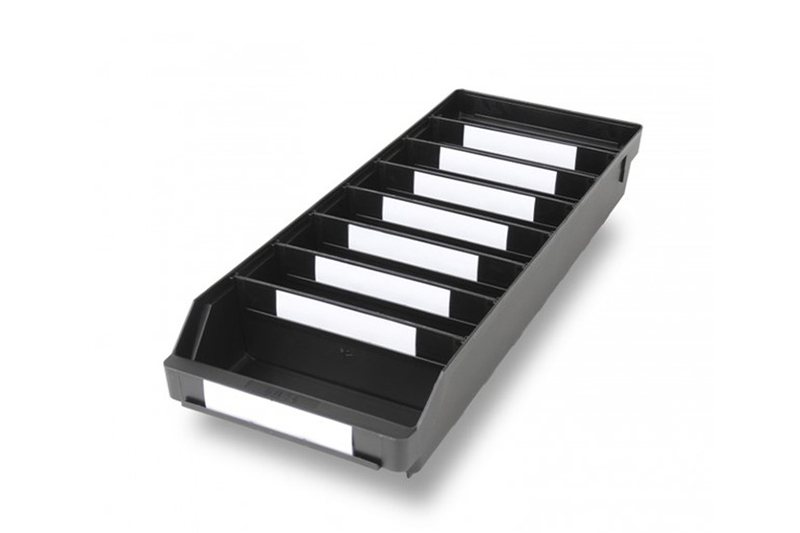Static electricity can cause significant problems in many industries, especially in electronics and automotive sectors. To protect sensitive components and create a safe working environment, it is crucial to use the right storage solutions. ESD boxes (Electrostatic Discharge) are specifically designed to address these needs. Stemo offers ESD boxes with the same high functionality and quality as our other polypropylene (PP) boxes, but with the added benefit of protecting against static electricity.
What are ESD boxes?
ESD boxes are storage containers designed to prevent damage caused by electrostatic discharge. These boxes are made from materials that minimize the risk of static electricity, protecting sensitive electronic components from potential damage. Just like our other PP boxes, ESD boxes are durable, reliable, and functional, with the added feature of being safe to use in environments where static electricity is a problem.
Benefits of using ESD boxes for small parts storage
- Protection against static electricity: ESD boxes protect electronic components and other sensitive parts from damage caused by static discharges.
- High quality and durability: ESD boxes from Stemo are made from the same robust PP material as their other products, ensuring long lifespan and reliable use.
- Organization and efficiency: These boxes help keep workplaces organized and efficient, reducing the risk of damage and improving workflow.
- Protection for employees: ESD boxes also protect employees from dangerous shocks caused by static electricity, creating a safer working environment.
- Dividers for additional sorting: ESD boxes can be equipped with dividers made of ESD material to allow for further sorting of small parts, enhancing organization and efficiency even more.
Applications of ESD boxes
ESD boxes are used in various industries where static electricity can be a problem. Some examples include:
- Automotive industry: To protect electronic components and modules used in modern vehicles.
- Electronics industry: To ensure that sensitive components such as circuit boards, microchips, and other electronic parts are not damaged during manufacturing or storage.
- Electrical engineering: For storing sensitive equipment and components that can be affected by static electricity.
How to choose the right ESD box
When choosing an ESD box, it is important to consider the following factors:
- Size and capacity: Ensure that the box has sufficient capacity to store all your components.
- Material: Verify that the box is made of materials that effectively prevent static electricity.
- Compatibility with existing Equipment: Make sure that the box fits with your current storage systems and work environment.
- Dividers: Consider using dividers made of ESD material to optimize sorting of small parts.
Important factors to consider when using ESD material
- Safety: Ensure that all employees are aware of how to properly use and handle ESD boxes.
- Maintenance: Regularly inspect and maintain ESD boxes to ensure they remain effective.
- Environment: Consider the work environment and ensure it is optimized to minimize the risk of static electricity.
Examples of industries using ESD boxes
- Aerospace industry: To protect advanced electronic systems and components.
- Medical technology: To ensure that sensitive medical equipment is not damaged by static discharges.
- Telecommunications: For storing and protecting components used in telecommunications equipment.
ESD boxes from Stemo offer a reliable and effective solution for industries that need to manage static electricity. With the same high quality and functionality as their other PP boxes, ESD boxes are an excellent choice for ensuring the safety and integrity of sensitive electronic components, while also protecting employees from potentially dangerous shocks. Additionally, the use of dividers made of ESD material allows for further sorting and organization of small parts, enhancing both efficiency and safety in the workplace.
